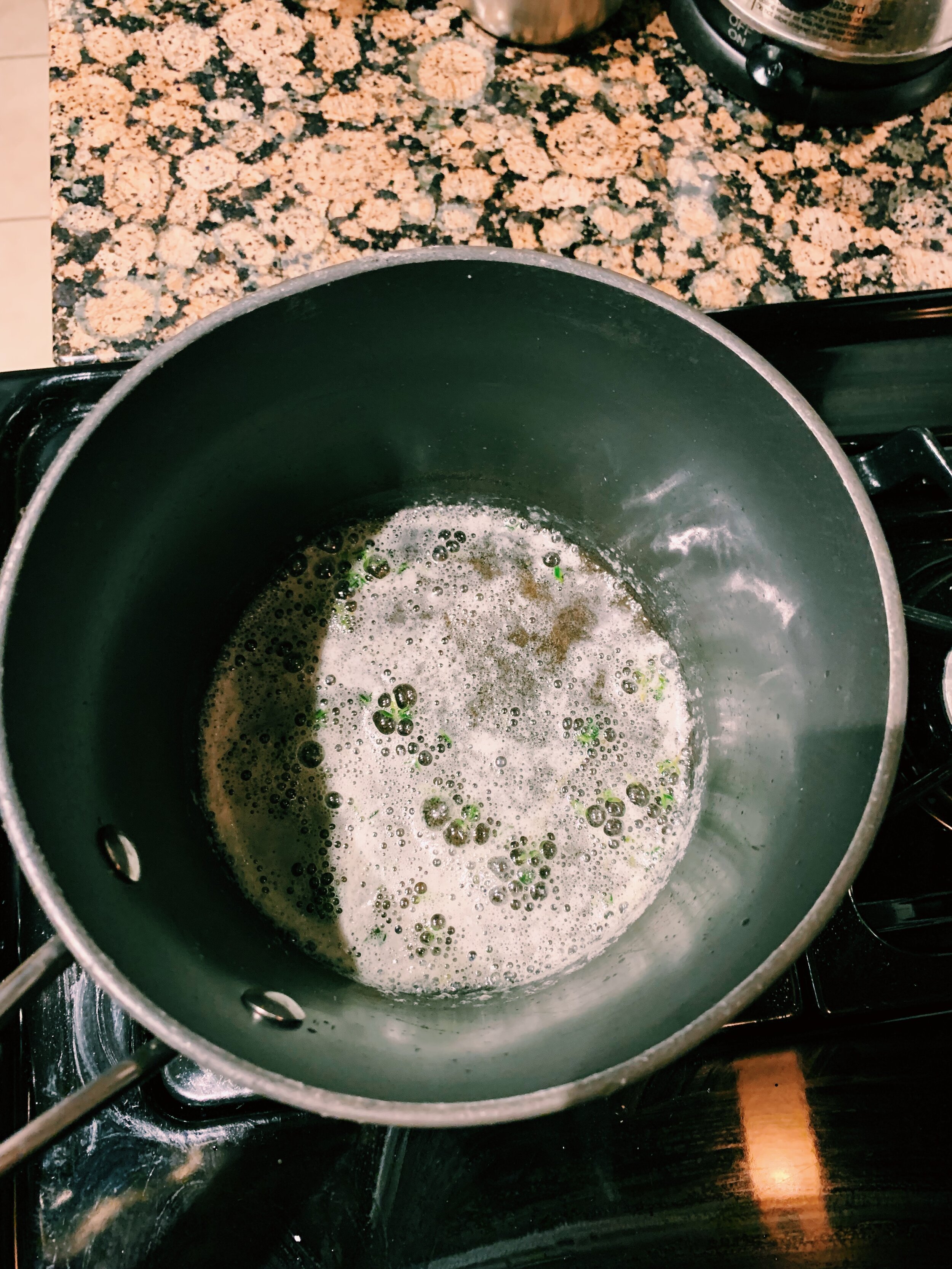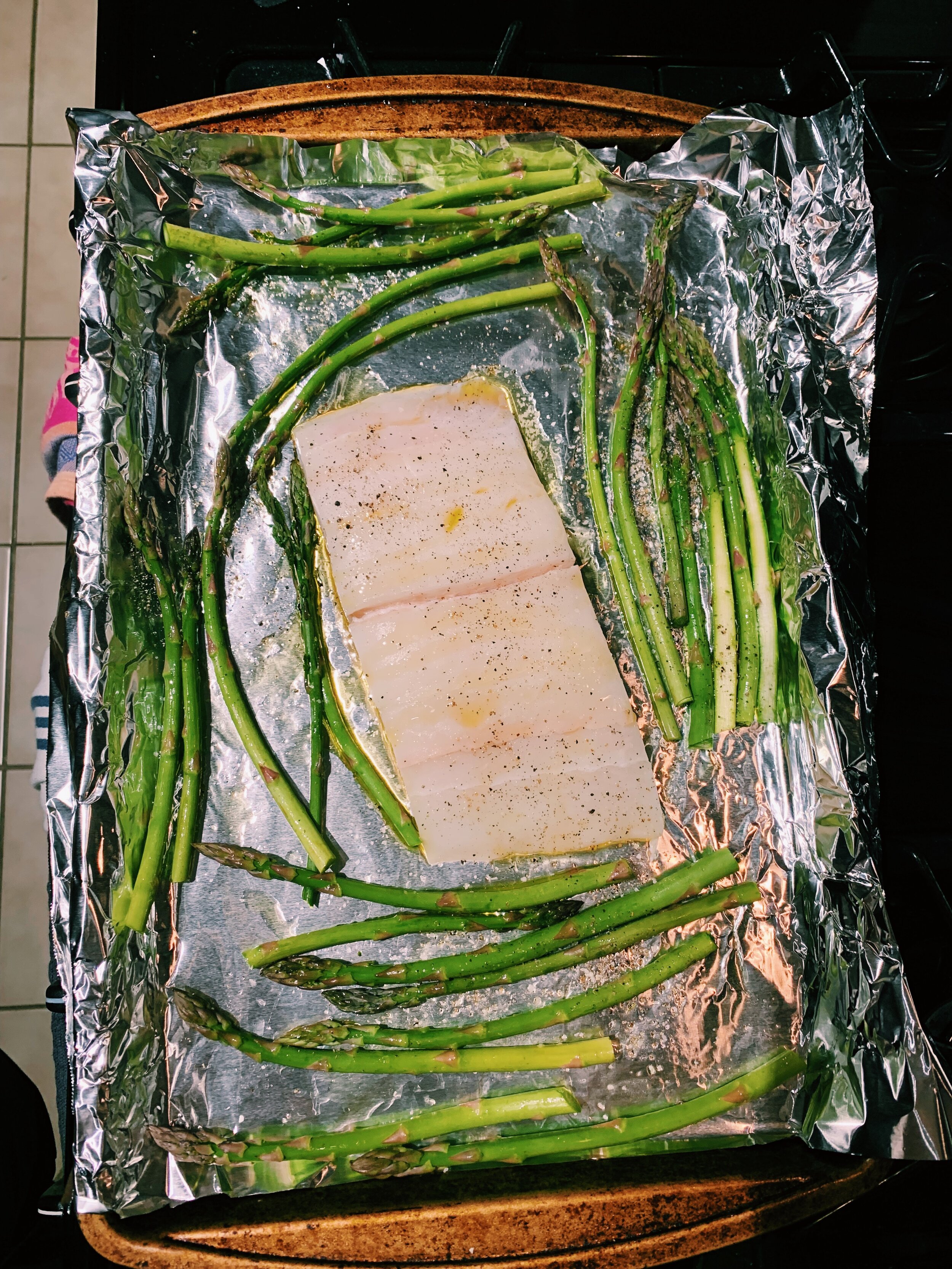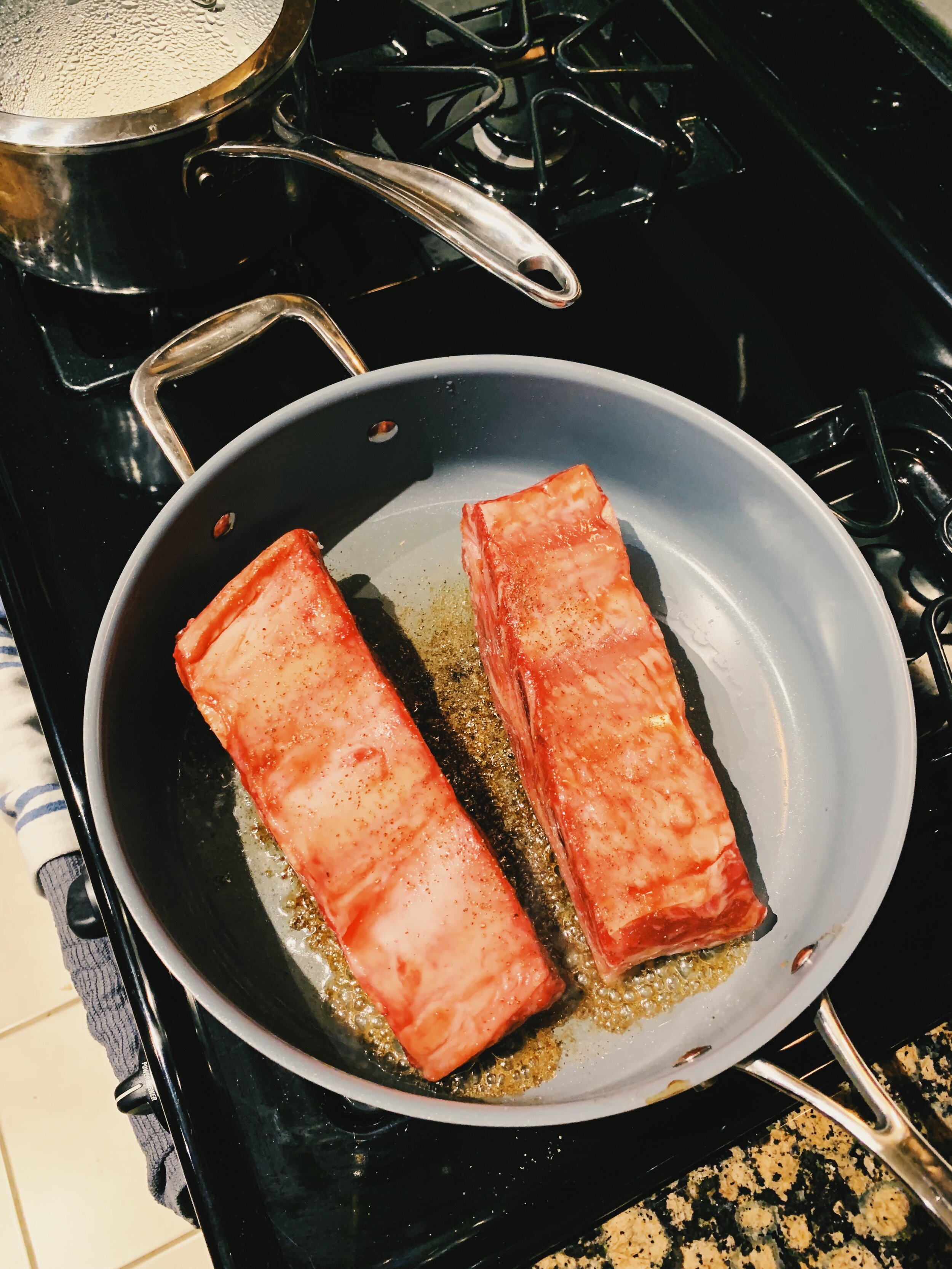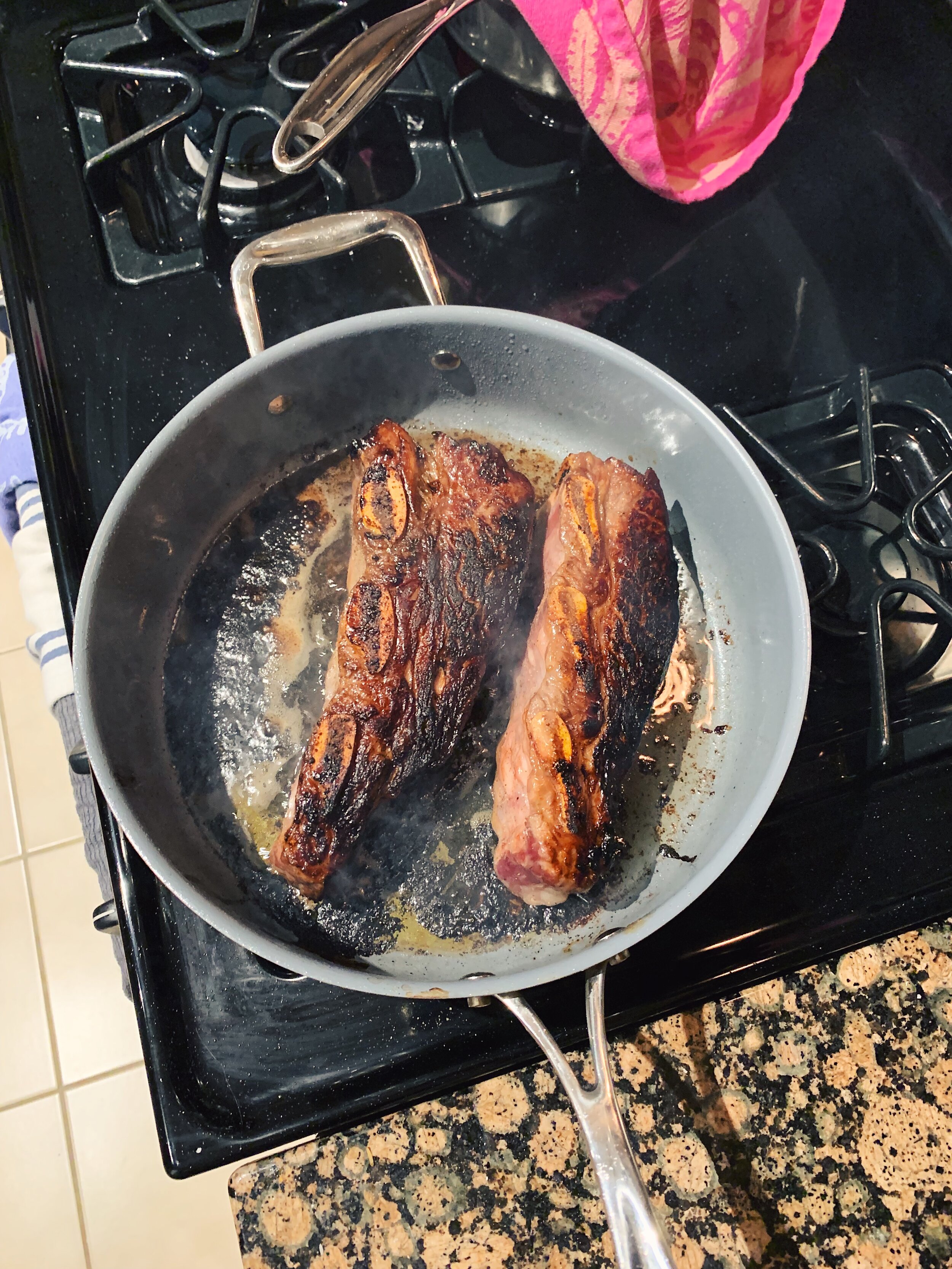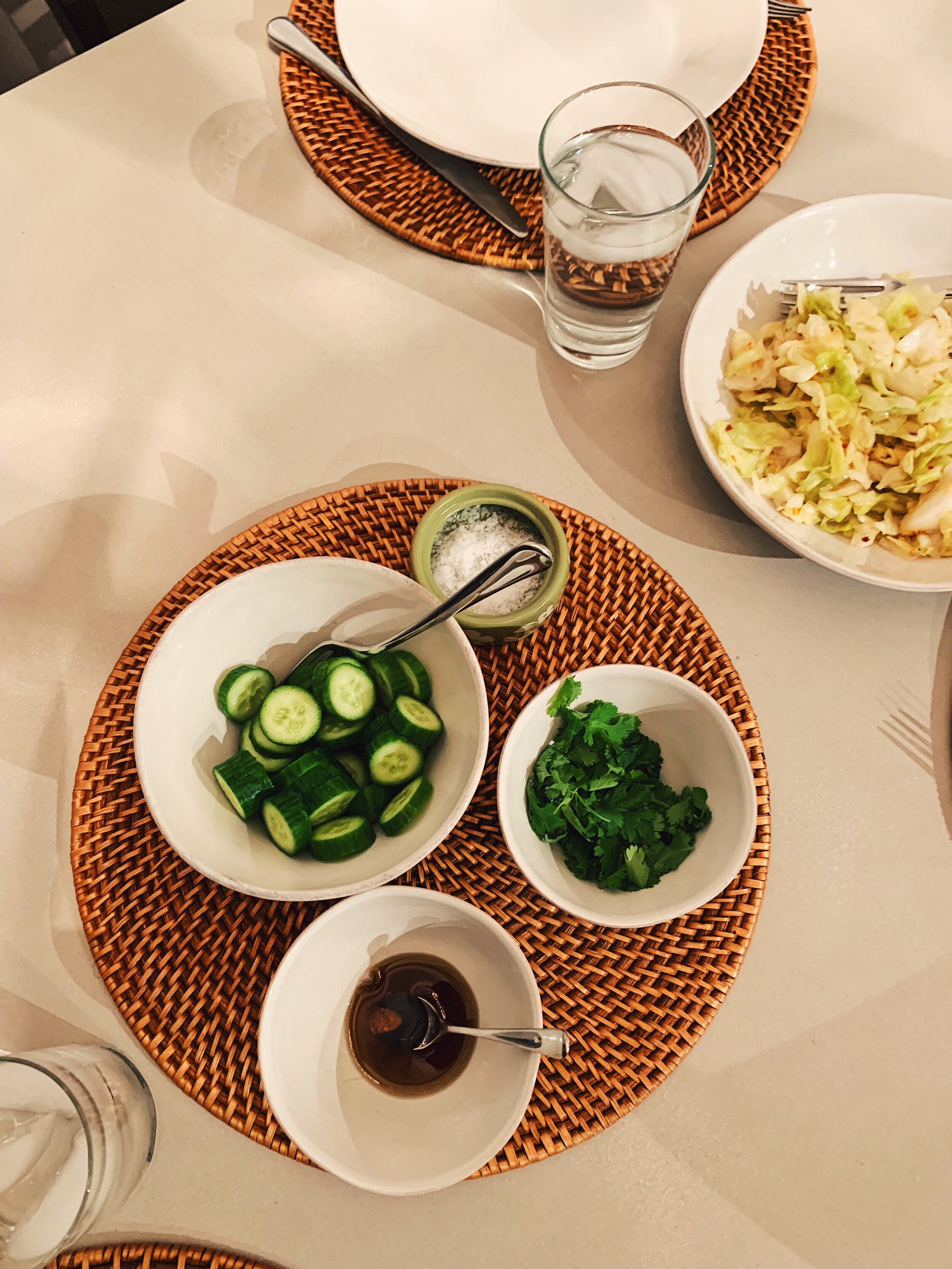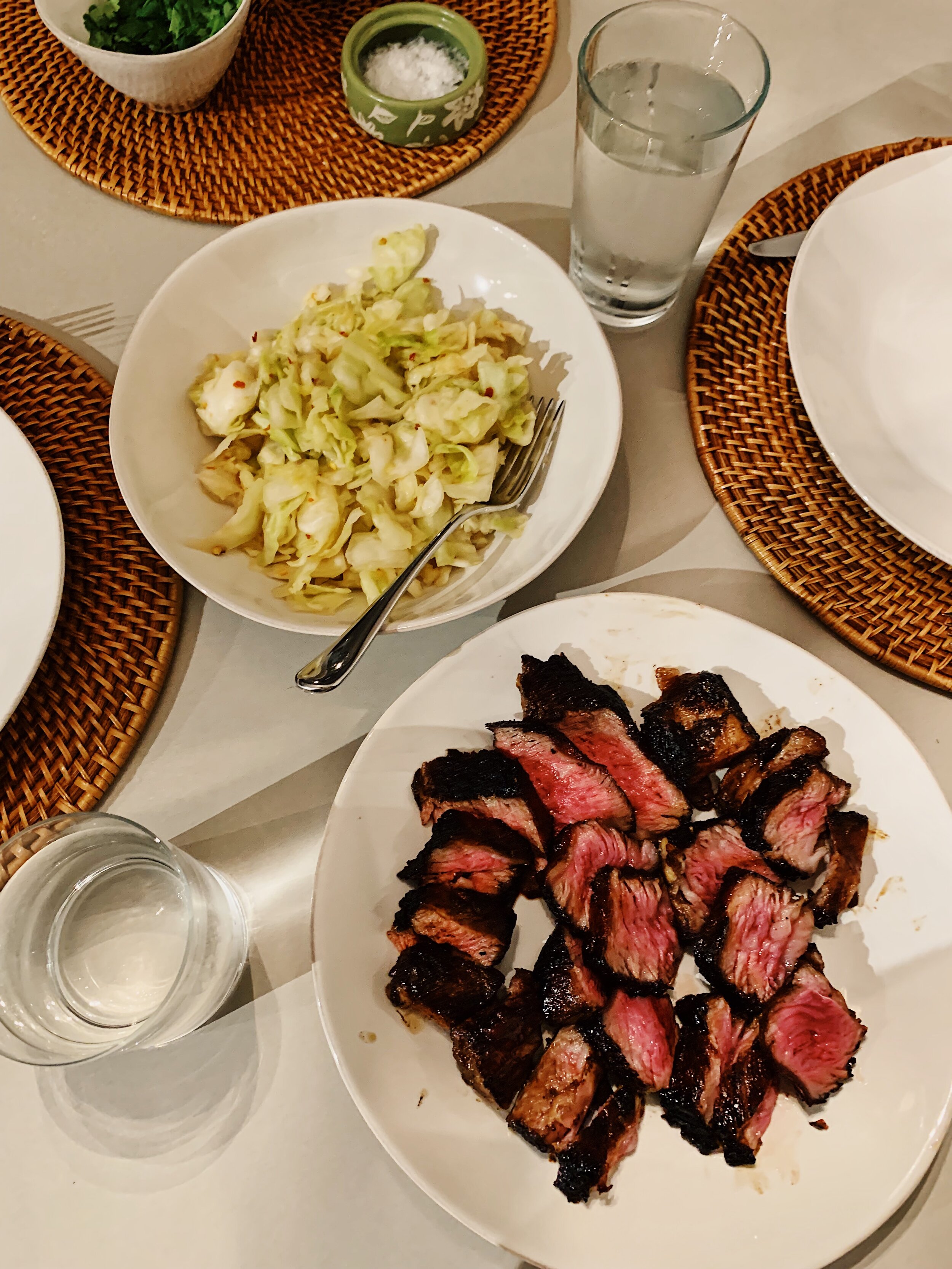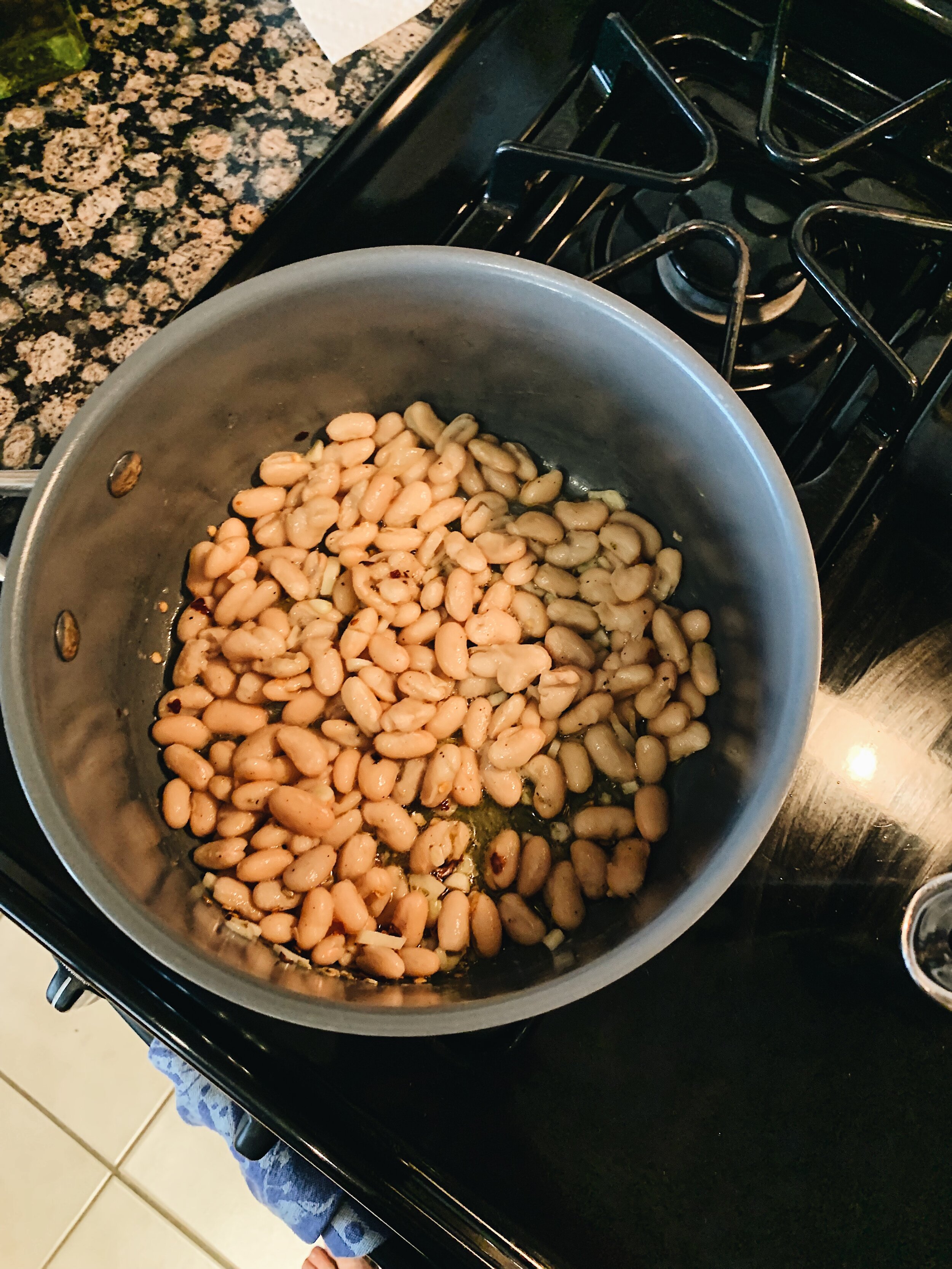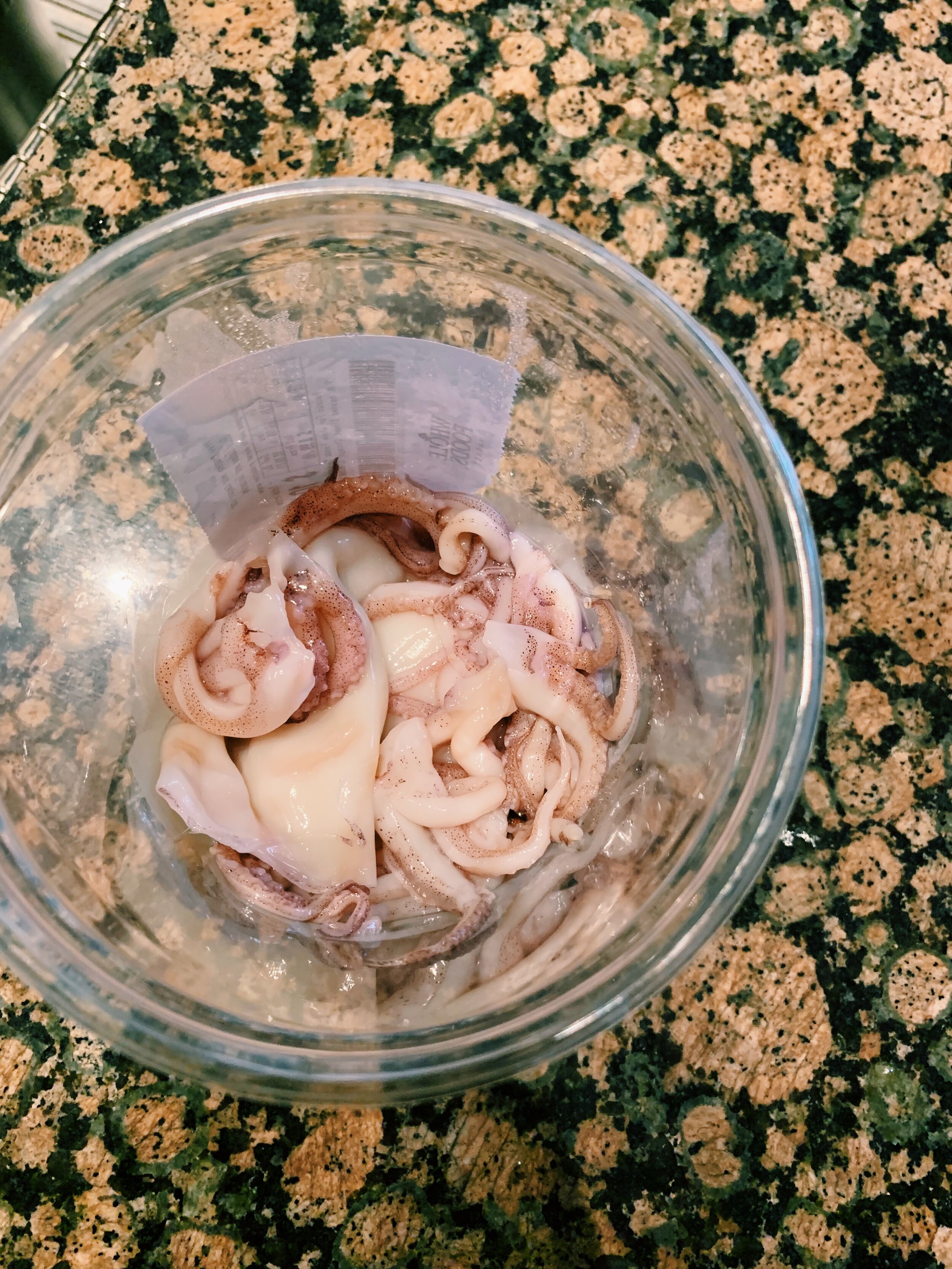When people ask me why I like Alison’s recipes, my first reason is usually their boldness. “She never half-heartedly commits to a flavor - it’s just all there, in your face!” Interestingly enough, this halibut recipe may be the most mildly flavored dish I’ve cooked of Alison’s (and I’ve cooked 150 so far!). And yet I’d still make the claim that she always, I mean always, pushes flavor as far as it can go.
Though this recipe is comparatively mild, I could still taste every ingredient in its fullness. The butter was very buttery, the olive oil and salt each enhanced the soft fishiness of the halibut and the springiness of the asparagus. The peas tasted very pea-like, emboldened by the butter, lemon juice, and black pepper. These descriptions might sound corny, but I don’t know how else to say that Alison maintains her commitment to bold flavor by embracing the mild flavors inherent to the ingredients involved in this dish.
I baked the asparagus and halibut in olive oil, salt, and black pepper, for twenty minutes, until my meat thermometer read 130 and the asparagus appeared sufficiently crispy. The butter took only several minutes to brown. The peas - thawed from frozen - spent several more minutes sauteeing in the butter before being doused with lemon juice. The meal felt almost, dare I say, healthy? And as God said on the seventh day, “It was very good.”
Note: Alison calls for chives and tarragon here. I sadly forgot to buy them. So instead, I added some fresh thyme to the buttered peas. It was also very good.
150 recipes cooked, 75 to go.


